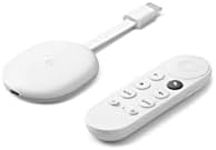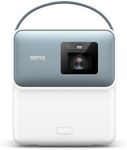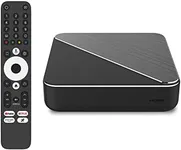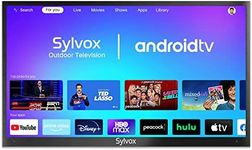Buying Guide for the Best Chromecasts
Choosing the right Chromecast or streaming device can make your TV experience much more enjoyable and convenient. The key is to think about how you plan to use it—whether you want to stream movies, mirror your phone, play games, or use voice controls. Understanding the main features and how they relate to your needs will help you pick a device that fits seamlessly into your home setup.Resolution SupportResolution support refers to the highest video quality the device can display, such as HD (1080p) or 4K Ultra HD. This is important because it determines how sharp and clear your videos will look on your TV. If you have a 4K TV and want the best picture quality, choose a device that supports 4K. If your TV is only HD, a 1080p device is sufficient. Think about your current TV and whether you plan to upgrade soon—choose a device that matches or slightly exceeds your TV’s capabilities.
Wi-Fi ConnectivityWi-Fi connectivity describes the type of wireless connection the device uses, such as Wi-Fi 5 (802.11ac) or Wi-Fi 6 (802.11ax). This affects how quickly and reliably your device can stream content, especially in busy households with many devices. If you have a fast internet connection and a modern router, a device with newer Wi-Fi standards will give you smoother streaming. For smaller homes or less crowded networks, older Wi-Fi versions may be just fine.
Remote Control and Voice AssistantSome streaming devices come with a physical remote and built-in voice assistants like Google Assistant, while others rely on your phone or tablet for control. A remote can make navigation easier, especially for family members who prefer traditional controls. Voice assistants allow you to search for shows, control playback, or even manage smart home devices using your voice. If you value convenience or have smart home gadgets, look for a device with these features.
App and Content SupportApp and content support means which streaming services and apps you can use on the device, such as Netflix, YouTube, or Disney+. Most devices support the major platforms, but some may have limitations or lack certain apps. If you have favorite services or want access to a wide variety, check that the device supports them. Consider your viewing habits and make sure the device fits your entertainment needs.
Casting and Mirroring FeaturesCasting and mirroring features let you display content from your phone, tablet, or computer onto your TV. This is useful for sharing photos, videos, or presentations. Some devices offer seamless casting from many apps, while others may have limited compatibility. If you often share content from your devices or want to use your TV as a big screen for your phone, prioritize strong casting and mirroring support.
Audio SupportAudio support refers to the types of sound formats the device can handle, such as stereo, Dolby Digital, or Dolby Atmos. This affects the quality and richness of the sound, especially if you have a soundbar or home theater system. If you care about immersive audio or have advanced speakers, look for a device that supports higher-end audio formats. For basic TV speakers, standard audio support is usually enough.












